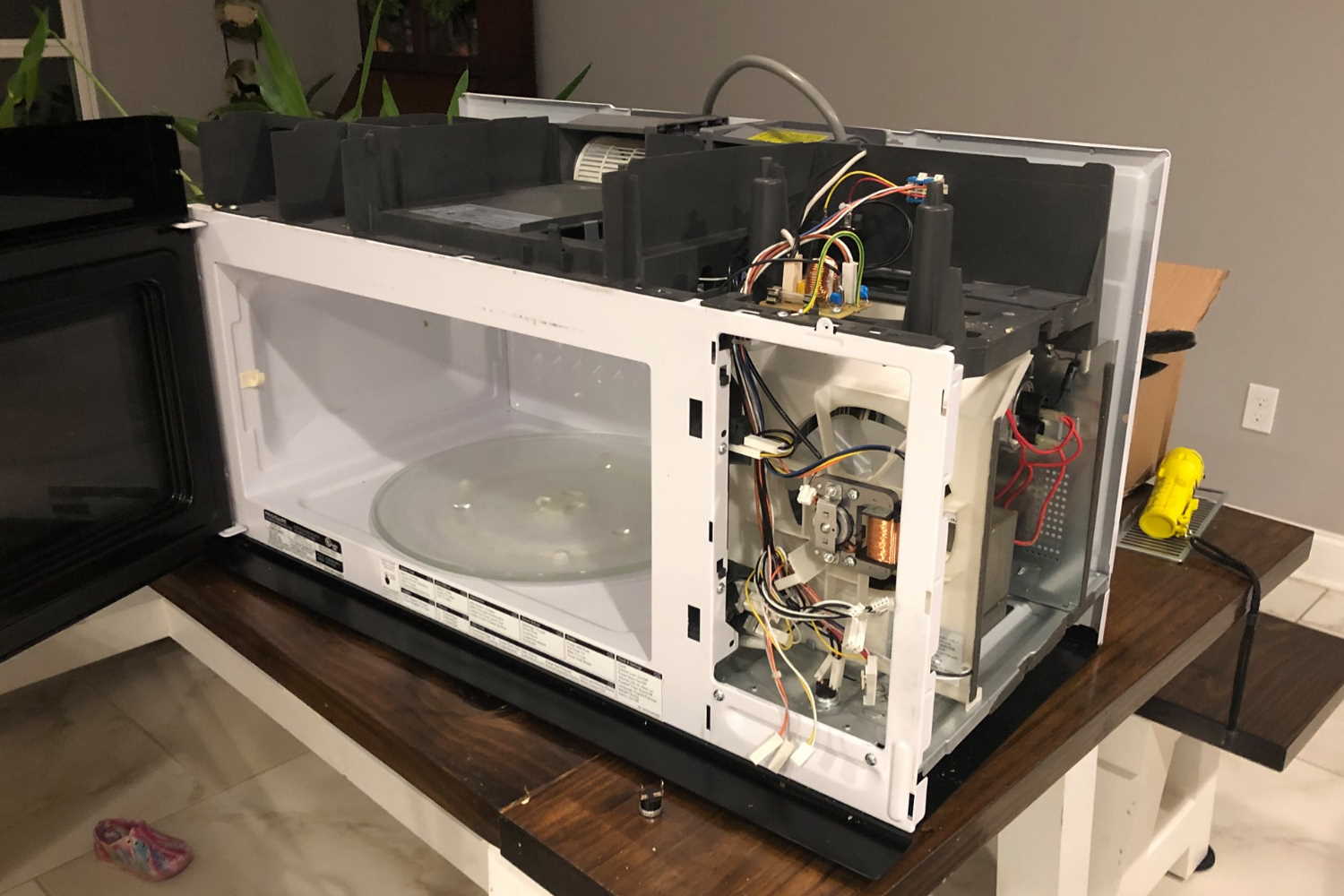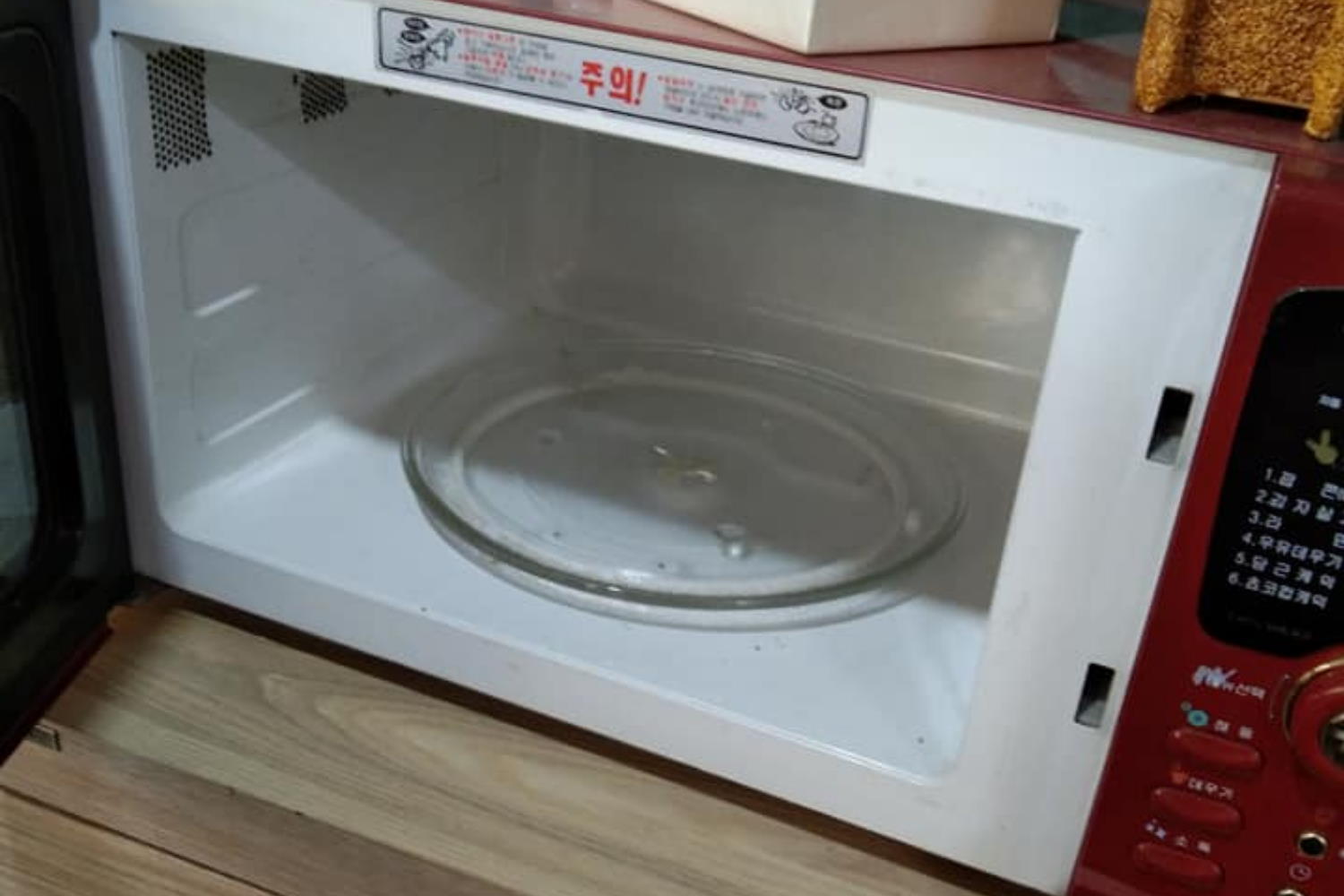Why is microwave tripping breaker?

Are you having trouble understanding why your microwave keeps tripping the breaker? Well, you are not alone! Microwaves are a convenient and valuable kitchen appliance, but when they start malfunctioning it can be frustrating to figure out what’s causing the issue.
So, Why is microwave tripping breaker?
The short answer is: If it’s tripping the circuit breaker, chances are that you’ve got an overloaded power line.
In this blog post, we will discuss some of the common causes of microwave tripping breakers, offering our advice on how best to identify and remedy these problems. With our help, you may find that fixing this nuisance is simpler than expected.
Why is microwave tripping breaker?
For many homeowners, dealing with overloaded electrical circuits is an everyday hassle. Unfortunately, the cause of this problem often lies in our microwaves – these appliances tend to draw more amps than a circuit can safely handle and once that limit is surpassed, electricity has no choice but to shut down for safety reasons.
To resolve things for good, find out why your machine demands more than its fair share and get up & running so you can go back to enjoying life without interruption.
Circuit breakers are a relatively common issue in modern households, yet when it happens too often, there’s likely an underlying cause. What could be causing your microwave to overload the circuit?
The culprit might come down to either damaged or outdated appliances that draw excessive electricity or there are just simply too many appliances plugged into a single outlet.
Investigate both scenarios to ensure a safe and reliable return to normal operations.
Cause #1: Your microwave is performing erratically.
Try testing the appliance by plugging it into a higher amp-rating outlet such as in your garage. If the circuit breaker trips, this could indicate that there is something wrong with the microwave, and professional help may be needed for repair or replacement. However, if nothing happens when you turn on the switch then what might be necessary is reallocating the dedicated power supply just for this kitchen convenience!
Cause #2: Unbalanced electrical loads
If you’ve been experiencing frequent breaker trips, it could be because too many appliances are on the same circuit. Microwaves pull around 12 amps and ought to have their dedicated line, separate from all other devices. To check whether your microwave is already set up with its individualized power source – look at what the tripped breakers label says; if “Microwave” is written there then a proper setup exists; however if not present this indicates that sharing of circuits might be taking place leading to an overload issue!
How to Fix It?
Step 1 – Check the Circuit Breaker
Wonder if your microwave circuit breaker is overloaded? To ensure the safety and longevity of this essential appliance, it’s important to inspect its power source.
Here’s how we going:
To test this, take a trip to the household breaker box and see if your appliance enjoys its dedicated line or is running off of the same shared source as other kitchen appliances. It means you may need to look for a dedicated or shared breaker labeled “microwave” or “kitchen.”
If your microwave is running on a dedicated circuit breaker, it might not be this particular breaker that’s causing any issues. That said, testing the circuit breakers to ensure they’re working properly should always be done first as part of troubleshooting. On the other hand, if a separate devoted line isn’t present for powering up your home appliance then an electrician needs to be consulted to install one; guaranteeing all voltage requirements are met accordingly. Lastly, once there’s been sufficient setup work conducted and more electricity provided by way of having implemented such measures previously tested – you can then confidently move ahead with further steps outlined in attempting resolution relief.
Step 2: Check The Microwave

If your microwave was tripping its dedicated circuit breaker– our guide will help you determine if the issue truly lies within the microwave itself. Explore our guide for further steps to fixing this problem!
Here’s how we going:
Ensure that your microwave is functioning properly by first plugging it into a high amp circuit with its dedicated power source. If the breaker trips when in use, this may indicate an issue, and professional repair should be sought out. However, if running on another outlet yields results then you know the root of the problem lies within the original socket or circuit breaker which will need to be examined by an expert technician.
Step 3: Inspect The Door Safety Latch
Within your microwave door lies an intricate safety latch of switches, ensuring the device can operate effectively and safely. However, if any part becomes broken or defective, it may very well cause a circuit breaker trip – be sure to keep them in check!
Ensure your microwave is running safely! Inspect the door safety latch to make sure it’s up to par.
Here’s how we going:
First, do a visual inspection of the hooks and replace any broken ones or even switch out for an entirely new latch unit if needed. Then disconnect from the power source and locate the micro switches on the door – once disconnected, use a multimeter to test them with both open & closed doors. If there are faulty switches detected after this testing process then they must be replaced to have peace of mind that everything is operating effectively!
Step 4: Inspecting a microwave’s turntable motor

Your microwave has a powerful motor that powers the turntable and keeps your food circulating for optimal cooking. However, when liquid seeps into this crucial component it can cause serious problems – tripping circuits and rendering your trusty appliance unusable!
To keep your microwave in tip-top shape, make sure to give it a good wipe after every use. If any liquids get spilled inside the cavity, act fast and clean them up before they can seep into the delicate turntable motor – if this happens it could cause a circuit trip!
Here’s how we going:
To see if your turntable motor is working properly and safely assess any potential risks, first turn off the power supply by unplugging it from the socket.
Then be sure to discharge the capacitor before proceeding – it’s best done with a technician in case of electric shocks.
Next, disconnect its connectors.
Then use a multimeter for continuity testing to tell whether or not there’s an issue.
Replace the motor if defective or proceed to turn back on your appliance after installation of a new one.
Last step: If you do need to replace your motor, re-energize it once more after installation and check that none of its functions are tripping excess circuit breakers!
Step 5: Inspect The Capacitor
A capacitor is a critical component of your microwave—it stores enough energy to keep the appliance running. Without functioning correctly, that powerful surge can result in a loud noise and circuit breaker tripping whenever you switch on your appliance – so it’s key to keep them up-to-date! However, trying to investigate or replace one yourself could be hazardous due to its voltage potential. It’s worth leaving this task for certified professionals if you want everyone perfectly safe from any electrical shocks.
Here’s how we going:
If your microwave isn’t working properly, it might be time to get out the toolkit! To inspect a possible issue with the capacitor, first, switch off the power and then locate this component.
Discharge its stored electricity before disconnecting any connectors and testing it on a multimeter.
Depending on what you find, either replacing or purchasing a new one may be in order – however fortunately there’s an easy way to test whether after installing if all is fixed: just turn back up that power supply and see if everything functions as normally without tripping any circuit breakers!
Conclusion
In conclusion, there are several reasons why a microwave can trip a breaker. The power surges, short circuits, incorrect labeling and placement of the circuit breakers in your home may all be factors that lead to a microwave tripping its breaker. Luckily, these quick fixes can help you identify and diagnose the problem so that you can easily resolve it. Moreover, if you ever run into any questions or issues while addressing this problem consider reaching out for help from an electrician or HVAC specialist. If you’re still feeling unsure about your situation, leave a comment for us!
We are here to help answer any further questions and get to the bottom of this issue. With this knowledge and proper resource allocation, we hope that your household has returned to full functionality safely.
Click here for more information.
References:
Microwave Ovens Can Be Zapped By Age Factors
What size microwave for a semi-truck?
I’m Vance Douglas, and I love making pizza. In fact, I love it so much that I decided to build my own oven to make it in. It’s a brick oven that I made myself, and it’s the best pizza oven you’ll ever find.
Making pizza is a passion of mine, and I’m always looking for new ways to make it even better. I’ve been making pizza for years, and I continue to learn more about the art every day. My goal is to create the perfect pizza, and I’m getting closer and closer every time.



